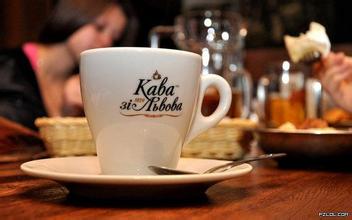Introduction to Flavor description of Burundian Coffee Bean by Grinding method
Burundi coffee beans
In fact, my first cup of Burundi coffee was coffee from one of the hills of Long Miles. It was a really memorable moment, as we finished grinding the beans and the intense floral aroma filled the room, I remember thinking it felt like the highest quality Ethiopian coffee I was familiar with. I still remember the intoxicating feeling of breaking grounds and sipping coffee, which is why I love these Burundi microbatches so much."
When it comes to quality control, Ben always takes it very seriously. Winning third and eighth places in the Burundi Cup of Excellence is a very solid testament to the potential he sees and how serious he is about coffee. A good example is that in the processing yard, there is a fruit selection team, and all coffee also goes through a "second soak" selection process to ensure that no defective beans will escape. Ben and Kristy see the potential of Burundi not just for business, but for better coffee, better society, better lives. "Misery" will no longer be used to describe Burundi, they see "happiness" and "joy" on the faces of producers
Coffee in Burundi was originally brought in by the Germans in the 1900s; they found that bourbon was the best coffee variety to grow in the local climate, which is usually a "tropical" plateau climate with very large temperature differences between day and night. However, due to the suspension of investment in coffee research, Bourbon became the only coffee variety left in the country and has been treated with "full washing".
The development of fine coffee needs continuous breakthrough and innovation. In 2014, the Long Miles Coffee Project (LMCP) began using sun treatment and honey treatment on their coffee, which made professional coffee cup testers happy with the taste of coffee. According to Miss Gu Qinru, head of Latorre & Dutch Coffee Asia,"Usually we can drink citrus and plum flavors in washed Burundi coffee. And this is the first time we've ever had a cup of sun-cured and honey-treated Burundi coffee. Its flavors become more complex with strawberries, grapes and tropical fruits. It seems that processing is crucial to the taste of coffee
Lundy coffee bears striking similarities to neighbouring Rwanda, whose coffee is often confused. Burundi's coffee cultivation is dominated by bourbon, processed coffee cherries using traditional wet processing, and its fine coffee is characterized by elegant sweetness and bright citrus aromas.
Burundi is a small landlocked country located at the junction of eastern and central Africa, straddling the Nile River and Congo River basins. Its topography is dominated by hills and mountains, and it has excellent coffee cultivation altitude. Coffee cultivation in Burundi has a short history. Its coffee cultivation is carried out entirely in the form of small family farms, with great differences in quality. Moreover, perennial war and social unrest also make its coffee cultivation very chaotic. But I have to admit that it has the potential to produce high-quality coffee.
Burundi Buyendi AA, FWS

Important Notice :
前街咖啡 FrontStreet Coffee has moved to new addredd:
FrontStreet Coffee Address: 315,Donghua East Road,GuangZhou
Tel:020 38364473
- Prev

Sumatran Coffee Bean Flavor description treatment Variety characteristics and taste introduction
Sumatran boutique coffee beans in ancient times the Arabs first dried and boiled the coffee beans and drank the juice as a stomach medicine, thinking it could help digestion. Later, it was found that coffee also had a refreshing effect, and because Muslims strictly prohibited drinking, coffee was used instead of alcoholic beverages as a refreshing drink. After the fifteenth century, the return of the pilgrimage to the holy land of Mecca
- Next

Introduction to the variety characteristics of coffee bean flavor description treatment method in Esmeralda Manor of Panama
Panamanian coffee Panamanian rose summer growth altitude: 1500-1650 meters, raw beans have a beautiful charming blue jade color, jade-like warm texture. In the entrance, oolong tea, peach, honey, citric acid are fresh, bright and balanced, the aroma is very layered, the whole aroma is wrapped with caramel sweetness, and the acidity on the tip of the tongue is obvious. Mild and round in the mouth, sweet and sweet
Related
- Detailed explanation of Jadeite planting Land in Panamanian Jadeite Manor introduction to the grading system of Jadeite competitive bidding, Red bid, Green bid and Rose Summer
- Story of Coffee planting in Brenka region of Costa Rica Stonehenge Manor anaerobic heavy honey treatment of flavor mouth
- What's on the barrel of Blue Mountain Coffee beans?
- Can American coffee also pull flowers? How to use hot American style to pull out a good-looking pattern?
- Can you make a cold extract with coffee beans? What is the right proportion for cold-extracted coffee formula?
- Indonesian PWN Gold Mandrine Coffee Origin Features Flavor How to Chong? Mandolin coffee is American.
- A brief introduction to the flavor characteristics of Brazilian yellow bourbon coffee beans
- What is the effect of different water quality on the flavor of cold-extracted coffee? What kind of water is best for brewing coffee?
- Why do you think of Rose Summer whenever you mention Panamanian coffee?
- Introduction to the characteristics of authentic blue mountain coffee bean producing areas? What is the CIB Coffee Authority in Jamaica?

